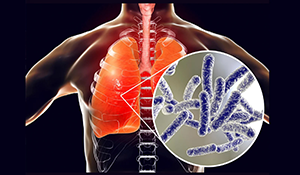Legionella bacteria naturally occur in freshwater environments such as lakes and rivers. They can become a concern when they proliferate and are released into the air in the form of small droplets (aerosols). If these aerosols are inhaled by people, it can lead to a respiratory illness called Legionnaires’ Disease. Legionnaires’ Disease is a severe form of pneumonia caused by the Legionella bacteria. To refresh our memory, let’s talk about the brief history of Legionnaires’ Disease:
When was it Discovered? The disease was first identified in July 1976 when an outbreak occurred at the Bellevue-Stratford Hotel in Philadelphia during an American Legion convention. Several attendees fell ill with a mysterious pneumonia-like illness, leading to the name “Legionnaires’ Disease.”
How was it identified? In January 1977, after an extensive investigation, scientists from the Centers for Disease Control and Prevention (CDC) isolated a previously unknown bacterium, which they named Legionella pneumophila. This bacterium was identified as the cause of the outbreak.
Environmental Source: Researchers discovered that Legionella bacteria thrive in warm water environments such as cooling towers, hot water tanks, plumbing systems, and decorative fountains. Inhalation of contaminated water droplets or aerosols is the primary mode of transmission.
Further Outbreaks: After the initial outbreak, other outbreaks of Legionnaires’ Disease were identified worldwide. Notable outbreaks include the Stafford outbreak in the UK in 1985 and the outbreak at a hotel in Murcia, Spain, in 2001. As per the CDC, the reported cases of Legionnaires’ Disease have been increasing since 2000. In 2018, health departments in the United States reported approximately 10,000 cases of this disease. However, it is important to note that the actual incidence of Legionnaires’ Disease may be underestimated due to potential under diagnosis. A recent study suggests that the true number of cases could be 1.8 to 2.7 times higher than the reported figures. Typically, a higher number of illnesses associated with Legionnaires’ Disease is observed during the summer and early fall, although it can occur at any time of the year.
Since 2000, the reported cases of Legionnaires’ Disease in the United States have increased nearly ninefold.
{% module_block module “widget_1689610746787” %}{% module_attribute “child_css” is_json=”true” %}null{% end_module_attribute %}{% module_attribute “content” is_json=”true” %}{“text”:””,”image”:{“src”:”https://5265512.fs1.hubspotusercontent-na1.net/hubfs/5265512/Screenshot%202023-07-17%20at%209.45.34%20AM.png”,”width”:761,”height”:553,”loading”:”lazy”,”alt”:”Screenshot 2023-07-17 at 9.45.34 AM”,”max_width”:761,”max_height”:553},”settings”:{“show_divider”:false,”img_size_fluid”:true}}{% end_module_attribute %}{% module_attribute “css” is_json=”true” %}null{% end_module_attribute %}{% module_attribute “label” is_json=”true” %}null{% end_module_attribute %}{% module_attribute “module_id” is_json=”true” %}29556172027{% end_module_attribute %}{% module_attribute “row_settings” is_json=”true” %}{“content_width”:”container-fluid”,”bg_color”:{“color”:”#FFFFFF”,”opacity”:100},”adv_settings”:{“padding_top”:”25px”,”padding_bottom”:”25px”}}{% end_module_attribute %}{% module_attribute “schema_version” is_json=”true” %}2{% end_module_attribute %}{% module_attribute “start” is_json=”true” %}{“col_arrangement”:”opt6″,”img_col”:”left”}{% end_module_attribute %}{% module_attribute “tag” is_json=”true” %}”module”{% end_module_attribute %}{% end_module_block %}
The reason behind this increase, whether it is due to heightened awareness and testing, increased susceptibility of the population, elevated presence of Legionella in the environment, or a combination of factors, remains unclear.
Legislation and Prevention: In response to the increasing number of cases, regulations and guidelines were implemented to control Legionella in various settings. These include maintaining proper water management systems, regular monitoring, and disinfection of water sources.
Global Impact: Legionnaires’ Disease continues to be a global public health concern. Improved surveillance, diagnostic methods, and public awareness have helped in identifying and managing outbreaks more effectively.
Legionella Guidelines: Various organizations and health agencies, such as the CDC and the World Health Organization (WHO), have developed guidelines and recommendations for the prevention and control of Legionnaires’ Disease. These guidelines provide measures for risk assessment, water management, and outbreak response.
Understanding the history of Legionnaires’ Disease has contributed to better prevention, identification, and management of outbreaks, reducing the impact of this potentially deadly illness on public health.
By implementing these preventive measures and adhering to industry standards and guidelines, the risk of Legionella growing can be significantly reduced, thus safeguarding public health. It is advisable to consult with experts in water treatment and HVAC systems to ensure effective control of legionella bacteria in cooling towers.




